I am an admitted fanboy of the Gothic franchise, with Gothic 2 listing near the very top of my ‘all time favorites’ list of games. It had been a while since I replayed Gothic 3 to any extent, so when Good Old Games added it to their lineup a couple of weeks ago, I couldn’t help but buy it … for the fourth time! I have the DVD version sitting somewhere, and have bought it on both Steam and Direct2Drive to get the full Gothic Collection digitally (at the time each only had a subset). Gothic 3 is a game that was met with pretty serious disappointment due to extreme resource requirements, flawed melee combat and overall bugginess. I couldn’t wait to see how it had progressed since my last playthrough!
The Hype
Orcs have enslaved the human race. You are one of the more fortunate ones, still free to roam Myrtana. Freedom affords you the option to stay true to the throne of the deposed human king, serve the Orcish usurpers, or carve your own path. Every decision made will have an impact on the fate of humanity and the balance of power. The choice is yours to make and will influence all those living in the shadow of the Orcs.
Gothic 3 is as non-linear as an RPG can get without losing a sense of purpose. Its huge, living world holds many treasures, breathtaking locations, and dark secrets. It is a giant playground in which you have total freedom. Gothic 3 suffered from a rocky start due to some bugs initially after launch. This version of the game, however, is patched and updated and offers a vastly smoother experience that makes it much easier for you to get drawn into the engaging world and its many plots.
The Reality
It went sort of like this – you were leaving one town after helping to protect the identity and interests of a ‘naturalist’ who was doing beneficial things that met with your sense of good. You felt really great about yourself. As you approached the next town, you came upon a burned out farmhouse occupied by Orcs. Their commander is concerned because the humans in the farm were innocents, and they were unceremoniously killed when the farm was razed. When you investigated, you discovered it was that same ‘naturalist’ who had killed the farmers and burned their farm to the ground and had no regrets, saying that they deserved to die rather than behave as sheep to the unnatural Orc defilers. Wait a moment! That isn’t the typical clear moral structure that we’re used to seeing in recent role-playing games! Who is the good guy and who is the bad guy?
This sort of grey-zone morality is what Gothic 3 is all about – the story picks up right after the end of Gothic 2, seeing your ship finally reach land in Myrtana and finding that the Orcs have won the war and that human society is in disarray, with the king besieged in the capital city under a protective field. After an initial battle that serves as your tutorial, your companions want to split up and see what’s happening around the mainland. Only Gorn sticks with you and even then just for a few moments – he knows the area and takes you to the nearby rebel hideout before doing his own exploring. This leaves you to search out the key to the Orc victory – Xardas, the enigmatic necromancer and former Fire Mage. The rest is up to you – will you side with the rebels or the Orcs, the nomads or the Hashishans, preserve Nordmar or allow it to fall into ruin? All of these choices and more are here, as you make your way around this massive world.
Now get this – while you might not like the relatively long load time when starting the game, it is the only time you’ll see a load screen. Well, that’s only partially true – you will frequently see loading screens when you die at the hands of superior beasts or gangs of bandits or other enemies, but entering a house or cave or dungeon or new area never results in a load screen. There are two prices for this. Firstly you will experience occasional stuttering and slowdown as the world streams in – especially if you are an endurance-rich sprinter like me! The other price is that Gothic 3 is an absolute system hog! Forget the minimum system requirements, unless you plan to spend hours researching online and experimenting with initialization file settings, and even then your experience will be less than stellar. While I had no issues on my Sony Vaio S-series or Alienware m11x (I just installed and played the first area), my attempt on my older Dell XPS M1710 was mostly a failure – and that was a top-end machine the year before Gothic 3 came out! Of course, I was able to tweak it to run, but it was far from satisfying. Suffice to say that even five years after release you STILL need a gaming laptop to run Gothic 3.
So once you’ve gotten enough horsepower behind you, is this the best looking game ever? No – but it is very nice looking! The shadows cast by the trees and buildings as the day/night cycle progresses are wonderful to watch; there are times when I have literally stopped for a couple of minutes just to look at the scenery of the moon reflecting on the surface of the water, with deer roaming around freely. All of the environments are highly detailed and well realized – from the temperate areas of Myrtana to the deserts of Varant and the frozen climes of Nordmar, in dungeons and houses and mines, the overall quality of the designs is excellent. There is definite unevenness with the textures however; while the majority of areas look excellent, there are areas in the desert in particular that look like they could have come from some of the earliest 3D games a decade ago. There are also issues with object placement in the environment, collision errors such as dead enemies getting stuck in buildings, people standing with their feet sunk into the ground nearly to the knee, trees with their bases over two meters in the air and more. This is a shame as the overall excellent design is slightly marred by inadequate testing and error checking, resulting in numerous problems that every player will encounter. The most problematic graphic item is the character design – most characters look good, but seem to be made of clay or plastic. The nameless hero in particular looks pretty bad, something you’re sure to notice in cut scenes and dialogue. The monsters and Orcs are very well done though, and every character features those exaggerated movements and gestures that immediately label this as part of the Gothic series! Whether you like or dislike these animations depends largely on your perspective of the series.
One of the great features of the series, and Gothic 2 in particular, is the excellent music. This is one place where the game is an unqualified success – this is not just the ‘best game music of the year’ material; it’s good enough to join the pantheon as one of the greatest game soundtracks ever. The common themes and motifs are all here, augmented and expanded to suit the darker and more desperate tone of the game. There is a wide range of music used to establish and carry much of the action, far beyond the few charming pieces that added ambience to Gothic 2; this soundtrack conveys the expanse of the desert, the tension of the monster-ridden forests and the harshness of the wintry northlands. The rest of the audio is not so stellar and is the subject of much debate on various fan forums. The voice acting works well enough without excelling in any way, and the environmental sounds are generally very good and provide a hint of what dangers wait around the next corner; particularly haunting are the lowing of the wolves and the clicking of minecrawlers.
There are some who argue that the voice acting is awful, but I find it no worse than the other games in the series – there is humor, sarcasm and pathos, the characters are believable and you will feel sympathy and empathy for many of them. There are occasions where the dialogue doesn’t match the subtitles exactly and other times where the translations seem a bit funky, but in general it works well. However, the battle sounds are not so good; while better than the unrealistic ‘steel on steel’ sounds when hitting a spider with a wooden staff in Dark Messiah Might and Magic, it’s nothing like the very satisfying ‘steel on steel’ of a sword battle toe-to-toe against another warrior in Dark Messiah. The sounds are appropriate for each weapon, yet they lack any feeling of strength or impact – until the killing blow adds a bit of a whoosh to the strike. Worse still are the sounds of human enemies taking damage – the ‘ughs’ and ‘ahhs’ are not particularly believable and are occasionally embarrassing for lower level enemies. The animal and creature battle sounds are much more reasonable, as are those of the orcs.
Once you have started a new game you’re dropped unceremoniously into the middle of a battle for control of the town of Ardea – this is a tutorial and trial by fire all at once. It is also one of the worst performing sections of the game. Similar to the first two games, Gothic 3 is played as a third person ‘over the shoulder’ action game. Unlike the first two games, you use the typical ‘WASD + mouse’ to steer around and run and look, clicking the mouse buttons to attack or block. The combat has been extensively modified from Gothic 2, but the results are every bit as controversial. In Gothic 2, many found the keyboard-centric combat controls too difficult and hoped for a mouse-driven approach. Gothic 3 delivers a system that maps standard attack and block to the left and right mouse buttons, where a ‘power attack’ is unleashed by holding the right mouse button and tapping the left button. There are a number of combos that are triggered by combining specific key presses and button clicks, and similarly to the previous games you need to disable combat mode to talk to someone or loot any corpses or chests. There is a simple reason for this – unlike many action-based games, you decide whether you want to talk to someone or attack them, which is integral to the almost total freedom you have within the game world.
The combat system itself requires further attention, as it is the area of greatest debate in the user community. There are three modes of combat – melee, ranged and magic. Aside from holding the bow in an unusual horizontal position, ranged combat gets very little commentary – perhaps it is equally under-utilized since the archer archetype tends to be a distant third to the favored warrior and mage character types. This is unfortunate, as ranged combat is quite well implemented in Gothic 3 – one of the better systems in a RPG in recent memory. Player and characters skills both have an impact on results, and taking additional perks shows an immediate impact. You can choose to advance bow or crossbow skills, each with advantages and disadvantages. The bow is quick to load and fire but does less damage; the crossbow can do huge amounts of damage, but is extremely slow loading until you reach the highest skill levels. Either gives you great opportunities to rain death from above or at a distance, at the very least thinning or weakening your opponents before wading into melee combat. You have several types of arrows and bolts to select from and changing ammunition is as simple as arming your bow and clicking the ammo type – of course, it is simpler to add them to the quick-select bar. When the bow is armed, you simply place your targeting reticule over the intended victim, hold down the mouse button to pull back the arrow and release to send it on its way.
Melee combat has been the subject of rampant discussion, both positive and negative – and almost all of it is true! The initial release had some significant issues with the player getting knocked around, stunned and disarmed, but the early patches resolved these issues, making melee combat much more balanced. There are still some problems – beasts are disproportionately difficult compared to humanoids and the stun-factor can spell quick death when enemies gang up on you, but most importantly much of the combat is still decided by getting in the first strike. The mechanics work well – directional swings, power attacks, parry and counter-attack are all tactical moves that will benefit you in melee. Making use of the combos and advanced perks will keep you alive much longer – as will learning what happens with different weapons and perks. Unfortunately though, unlike in the previous games your attacks never look different.
As you gain sword fighting mastery, the amount of damage per hit increases (on top of increased damage from raising strength) but you also get other bonuses. For example, taking the second level perk allows you to partly break through attempts to block or parry, doing small amounts of damage even on a successful block. At the highest level you do increased damage through blocks and also have a chance to knock down your opponent. If you are fighting a single opponent, this gives you a chance to strike a killing blow – otherwise you get attacked by other enemies. Gothic 3 does a great job of making your weapon choice matter; for example, a short single-handed sword is fast but requires you to get very close to your enemy, which obviously puts them very close to you! Larger swords are slow but much more damaging and have a greater range. Pole weapons, such as a halberd or a staff, can provide the best ‘defensive offense’ against a large group, since you can keep a group at bay by getting knockdowns on multiple opponents and then changing direction to knock-back other opponents. Of course, if you are also facing shaman or archers this strategy won’t be quite as effective. The overall point is this – the melee combat in Gothic 3 isn’t broken, but it could use considerable tweaking and balancing to be more satisfying for a larger number of players.
Playing a mage in any of the Gothic games has always presented a challenge, but Gothic 3 has some design changes that make it somewhat easier to focus on magic as your primary means of destruction. First, get the notion of playing a D&D-style wizard with low strength and a big brain right out of your head, unless you really like seeing loading screens – any mage you play will be a battle mage, with decent sword skills to get you out of situations when enemies get too close or your mana runs low. And this will occur quite frequently, especially early on. So while you can scrape together enough Ancient Knowledge (AK) and Learning Points (LP) to get yourself the ability to throw a fireball or two, you just won’t have enough mana to be a serious magical artillery platform for quite a while.
Once you do gather enough experience to raise your AK high enough and give yourself a decent mana pool (and loads of mana potions), you will be a walking tower of devastation! Gothic 3 addresses one of my primary criticisms of the magic system in previous Gothic games – in the other games the damage from spells remained constant regardless of level (this was explained because you were simply learning to read more complex Runes, not actually gaining more magical power). In Gothic 3, since you are actually learning the Ancient Knowledge of inherent magical power, your spells do more and more damage as you increase that knowledge. It’s a great thing to see the same spell do more damage to enemies as you increase your power, and also see that catching enemies off-guard causes significantly more damage. This makes long-distance fireball kills very easy ways of thinning a crowd. Add to that the ability to eventually find a way to have your mana pool regenerate and you have the makings of an extremely satisfying offensive magic system. Of course it isn’t perfect – aside from having to carefully spend points early on to balance your magical skills with other pursuits, there are many spells that sound good but are largely useless. These mainly include damage over time spells and weakening / fear-inducing stuff. If you think of damage-over-time spells as ‘active weakening’ you are fine – that is the end result, since enemies won’t stop rushing at you because their health has dropped by half. This isn’t too bad, since it makes taking them out that much easier, but a spell such as Fog is almost completely useless, or certainly not worth the Learning Points and mana required.
Getting from place to place in Gothic 3 means spending a lot of time walking – there are teleporter stones for each area that you can find or steal or loot, but the open area between towns are filled with actual things to do that you would never find otherwise. There are hunters and bandits and lost mages amongst others. Don’t expect the game to tell you where to go next though; the map works well but is a general tool that won’t give you specific locations and the compass doesn’t have some magic property to tell you where to find your next objective – you have to explore and work your way through finding things. Missing from the previous games are the city maps, and with the complex layout of some places that certainly would have been welcome.
The quest structure is interesting and unique – quests are given ‘by the world’, with additional bonuses given by talking to the interested individual. This means that if you come across a lair of tough minecrawlers and kill them all, you will get a message about completing the quest and information about what faction and town benefited most. Based on this you can search that town for people to talk to until you get the option to take credit for completing the quest. The other thing you will quickly realize is that the bulk of your experience comes from completing tasks rather than killing things (of course, most of those tasks involve killing things, but still…) Each town has a power structure and a series of merchants and others who require assistance, and each of the quests you accomplish enhances your reputation in that town. Raising your reputation high enough allows you to gain access to the restricted areas of town and eventually lets you speak to the leaders. Reputation also serves similar to a Diplomacy skill – if you pass a certain level of reputation then certain dialogue and quest options open up, much like having passed a skill check in other games. The succession of quests in each town can seem a bit of a grind at times, but it makes perfect sense within the context of the situation – you need to purvey favor of some type with the Orcs regardless of what side you are on, just to make your way around the world.
I have hinted at some of the issues throughout the review, but now it is time to address them head-on – Gothic 3 has loads of issues related to just about every technical and gameplay aspect of the user experience. Some of these are annoyances, others are bad enough that they will cause some players to quit and uninstall the game – and others will have former Gothic fans running from the room screaming and pulling out their hair! One that I encountered was that the game would occasionally stop giving me experience for minor kills – I was fairly far into it by then, so that I expected to take out an entire camp of Goblins with a single Fire Rain spell (plus a ‘little something extra’ for the shaman). While everyone in the camp died, I didn’t get the expected stream of experience numbers in the middle of the screen. So I quit and restarted the game, and I happily got my 1000 or so experience points for destroying the camp.
There are the many graphical glitches I mentioned, plus dozens more – to get decent graphical quality and performance most people will STILL need to do a significant amount of tweaking and adjustment of settings. Assuming that the default settings will work for most is a mistake. There are also a load of problems with quests – some are inherently broken, others get completed but never moved to the ‘successful’ tab, while others cannot be completed because the target got eaten by a Hungry Wolf or Malicious Ripperbeast. There are places where quests and NPC behavior conflict and leave the player unknowingly with an unsolvable quest. This can happen fairly late in the game when pursuing certain stone artifacts – a couple of them are being held by Orc shaman in camps that are automatically hostile to you. However, if you defeat enough of the orcs they will flee the camp – and if you didn’t kill the shaman then the artifact ran away with him. This leaves you completely unable to complete the quest and it is something you may not know until much later.
The Good Old Games version is the best release I have ever played of Gothic 3. Installation was smooth, startup was problem-free, I didn’t need to do any patching (and didn’t apply the community patch), and on my Sony Vaio S the game worked perfectly with all settings at maximum. I didn’t see any crashes to desktop that I had experienced even with the Steam version, and the overall experience was the most refined and polished yet … but still, as I note, there were issues.
Despite all of the problems and issues, I really found Gothic 3 to be a deep and richly satisfying role-playing experience. It 2006 it was at once one of the most problematic and most rewarding games I’d played all year; the worst of the Gothic series but the best action-RPG of 2006 and a solid game that stands above recent efforts like Dragon Age II or Dungeon Siege III. But it’s clearly a disappointment – from the Gold Master that was pulled for terrible bugs to the very problematic European release, it is clear that the game needed more time in development. Yet it is also clear all the way through what the developers were trying to do – to create a living world that is part of the Gothic universe, in which the nameless hero is just a small part of the overall picture. And they did amazingly well at capturing that – the game is at once huge and intimate, with a scale that encompasses world events and a single person’s problems with equal importance and skill.
RetroGamer Perspective: Gothic 3 is much more strongly attached to the gaming types shared with Elder Scrolls IV: Oblivion and Two Worlds, and the heavy system requirements means it isn’t something you can play alongside Ultima VII!
– Digital Download / CD version? – At this point the digital download route is preferable as it has all patches included. The CD is available in places like Amazon SHops.
– Installation Notes: Installation is relatively slow due to the game size and the way it allocates files
– Disk Space Requirements: full-install takes ~2.8GB.
– CD Required to Play? No
– Control Considerations? Gothic 3 defaults to the standard WASD + mouse control scheme.
– Is it ‘Netbook-Friendly’? Definitely NOT! Just don’t even think about it …
– Will it run with Integrated Graphics No!
– Special Considerations for running in Windows XP / Vista / Win 7? No – the game runs perfectly well even under 64-bit Windows 7.
– Compatible versions for other OS such as Linux or Mac OS? No – this game is Windows-only.
– Notes on the Digital Version: Gothic 3 has been on Steam, Direct2Drive, Impulse and other sites for a while, but the Good Old Games version recently released feels like it was given the greatest amount of polish and care. Any version works fine and accepts the community patches.
Current Outlook & Future Prospects: Gothic 3 was the game that killed the Franchise – Piranha Bytes went on to make Risen, whereas Jowood created the generic Gothic 4. Of those, Risen is MUCH better, meaning that interest in the Gothic games will diminish from the already small niche hardcore PC RPG crowd.
Conclusion: Ultimately I think that Gothic 3 is a niche game – it’s not for the casual or action-gamer, but the hardcore RPG gamer, and it is the hardcore player who will see this diamond in the rough for what it truly is. Unlike the horrific launch of Dungeon Lords, which eventually revealed that there wasn’t much of value beneath the buggy exterior, Gothic 3 has a tremendous world of role-play available for those willing to persevere – and I strongly recommend the game to players in this category, who also have the behemoth computer power needed to run the game in the first place. Sadly though, for most people, that means just stay away.
Review: Gothic 3
Where to Buy: Good Old Games
Price: $9.99
What I Like: Perhaps the most ambitious game ever; fully realized living world; NOTHING is ‘black & white’; tons of choices with consequences; different classes play differently; loads of gameplay in an story-driven open world; entire game is gorgeous
What Needs Improvement: Even five years later the game is demanding of system resources and not fully polished.
Source: Personal Copy
And here is the official trailer for Gothic 3 from 2006!

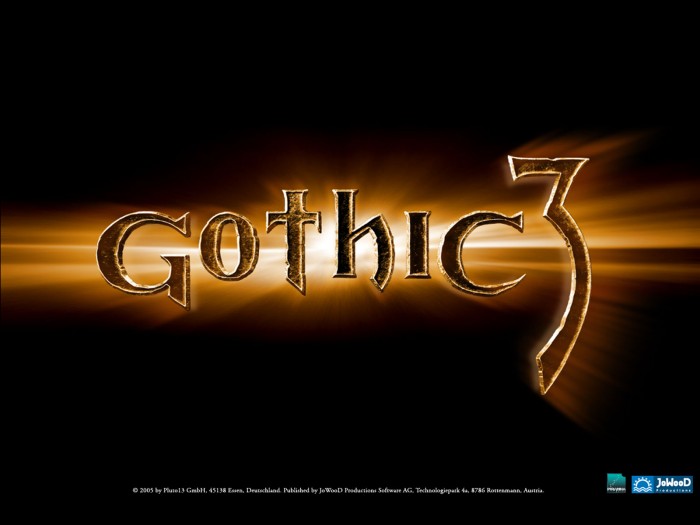
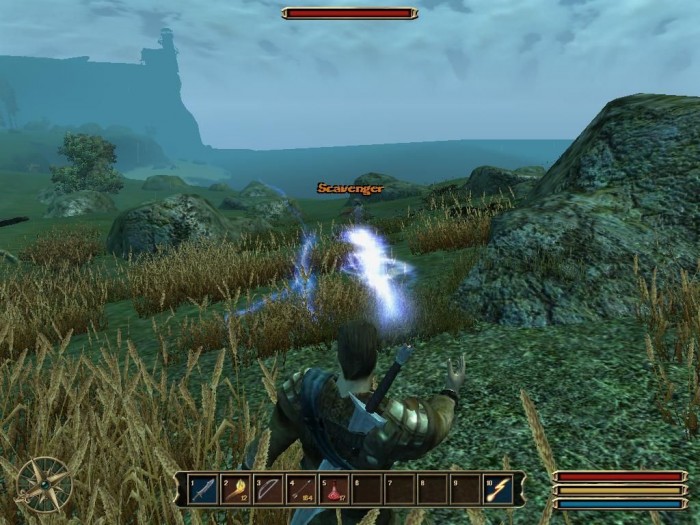
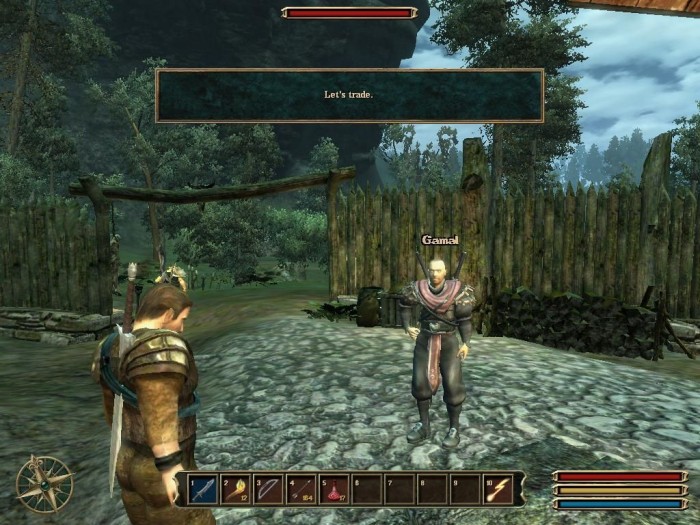
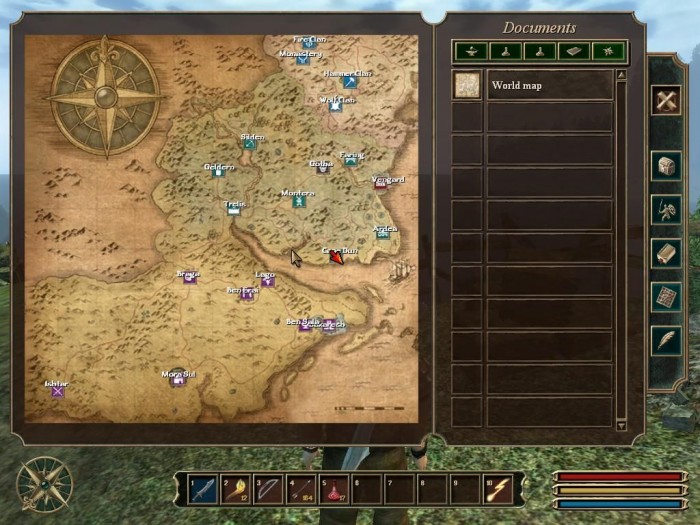
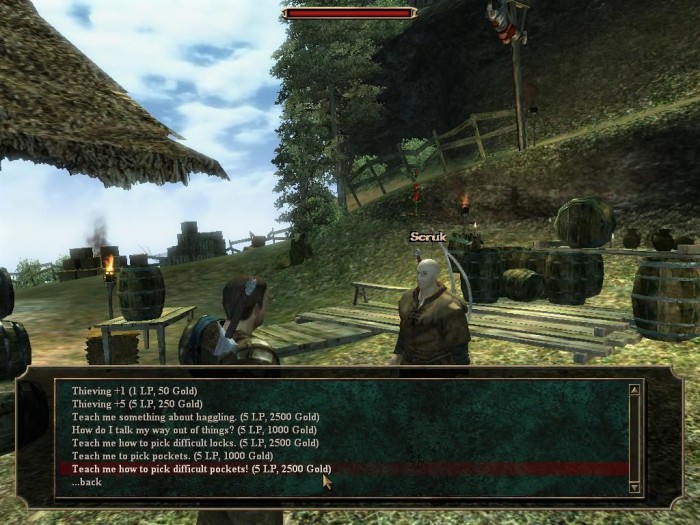
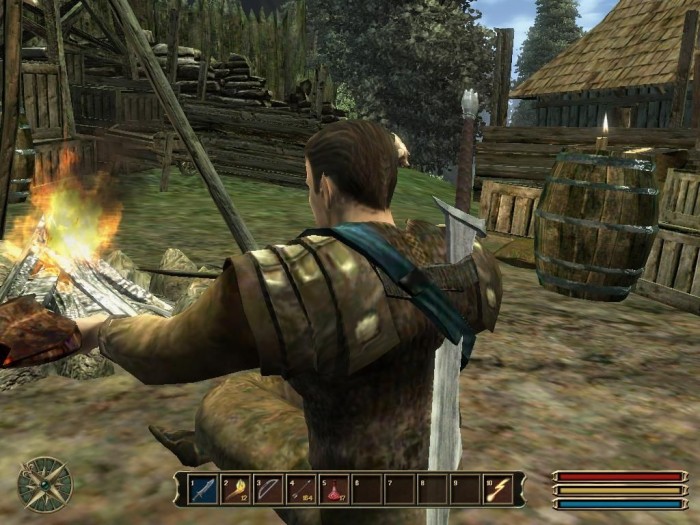








I still remember the anticipation and great disappointment I felt with this game. I agree this is the worst of the first 3 games but still has its charm. I have the steam version but I might get this to see if it runs better. I do still hope to one day make a dominating mage run like I did in Gothic 2.
It does have charm, and I like it better than many games … but given the choice I will just replay Gothic 2 again …